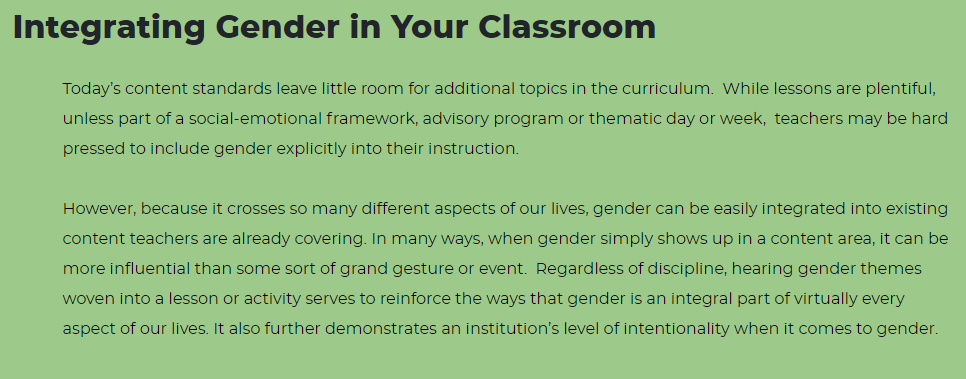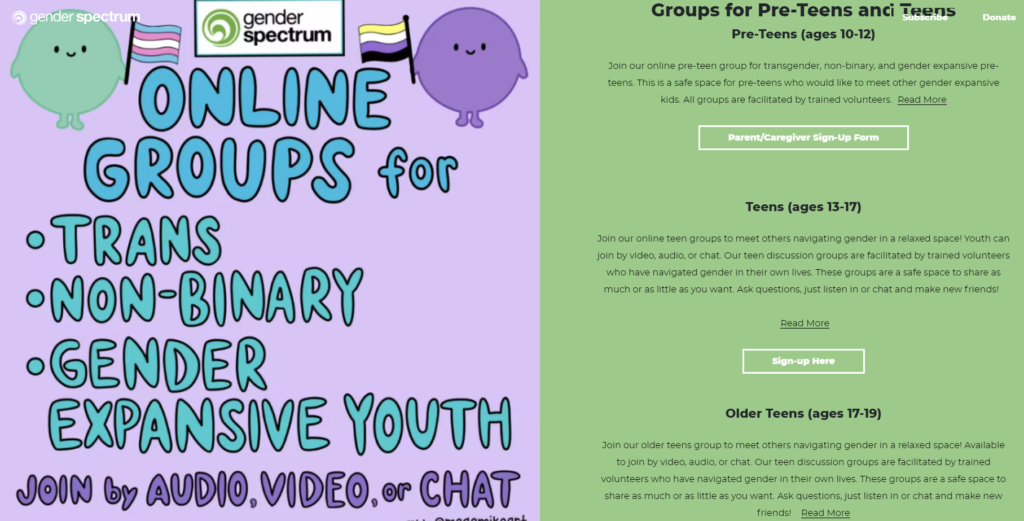
West Allis-West Milwaukee School District uses guide for transgender students created by Human Rights Campaign and Gender Spectrum; guide pushes schools to keep gender identity of students secret from parents
Incidents
- Issues
- Parent Rights
- Sex and Gender
The West Allis-West Milwaukee School District explained to Parents Defending Education in response to a public records request that the district uses a guide titled “Schools in Transition: A Guide for Supporting Transgender Students in K-12 Schools.” This guide was created as a collaboration among numerous organizations, including the Human Rights Campaign, Gender Spectrum, National Education Association (NEA), American Civil Liberties Union (ACLU) and the National Center for Lesbian Rights. The district explained that this “is a guide for schools to support transgender students and it has been shared between student services staff members over the past few years.”
The guide discusses children as young as toddlers transitioning to another gender. The guide explains early on that “one of the most prevalent misconceptions about gender is that it is based solely on a physical understanding of sex, and that everyone fits into one of two opposite categories, male or female.” The guide then further explains that children know they are transgender as young as two years old:
Children typically begin expressing their gender identity between the ages of two and four years old. Around this age, transgender children often express their cross-gender identification to their family members and caregivers through statements like “I have a girl brain and boy body,” or vice versa, and behavior like dressing in clothing and engaging in activities consistent with their gender identity.
The guide explains that schools should keep the gender identity of students a secret from parents. The guide states that schools should help students transition without parents knowing by explaining that “the school and student should determine how to proceed through the collaborative process of figuring out how the school can support the student and balance the student’s need to be affirmed at school with the reality that the student does not have that support at home.” The guide even provides schools with advice on how to handle testifying in court on the issue:
Sharing the school’s experiences with the student before and after the student began identifying as transgender can help highlight to the judge the importance of affirming the student’s gender identity. Describing the academic, social or emotional changes that school personnel observed will strengthen the testimony and give the judge a fuller understanding of the child’s needs and what would be in that that child’s best interests.
The guide also explains that schools should create a “tailored Gender Transition Plan” for students and reiterates that family can be left in the dark regarding a student’s gender identity. The policy explains: “The urgency and timing of the gender transition must be carefully balanced. Ideally, the student is not currently experiencing an unmanageably high level of distress at school, which will allow the student, school and family (if appropriate) to work together as a team to establish the most positive scenario in which the transition can take place.”
The guide then pushes for schools to allow students to pick their preferred restrooms and locker rooms: “Providing transgender students with access to the restrooms and locker rooms that match their gender identity is yet another way that schools adjust to meet students’ individual needs.” The guide continues to explain that it is okay for students to feel “uncomfortable” with the opposite sex using their restrooms:
These key concepts — that respect for the transgender student should be the starting point, that being uncomfortable is not the same as being unsafe and that school officials have a responsibility to ensure the safety of all students — can be applied to any other “what ifs” that may arise when providing a transgender student access to the appropriate restroom and locker rooms.
The Human Rights Campaign is a political organization that advocates for corporations and schools to adopt LGBTQ issues in their businesses and curricula. The organization has a history of working with schools, teachers unions, and the federal government to push LGBTQ activism into the nation’s education system. The organization additionally promotes using lawsuits to block laws that would protect children from being taught gender ideology while at school.
The organization Gender Spectrum offers resources specifically targeting “youth” and even teachers. Gender Spectrum offers resources to educators on a page titled “Integrating Gender Diversity Into Everyday Curriculum.” This page explains that the discussion of gender can be integrated into subjects like history, science, mathematics, and even physical education. In targeting the youth, Gender Spectrum offers online chatrooms for children as young as 10 years old who identify as “trans” or “non-binary.”


Stay Informed
